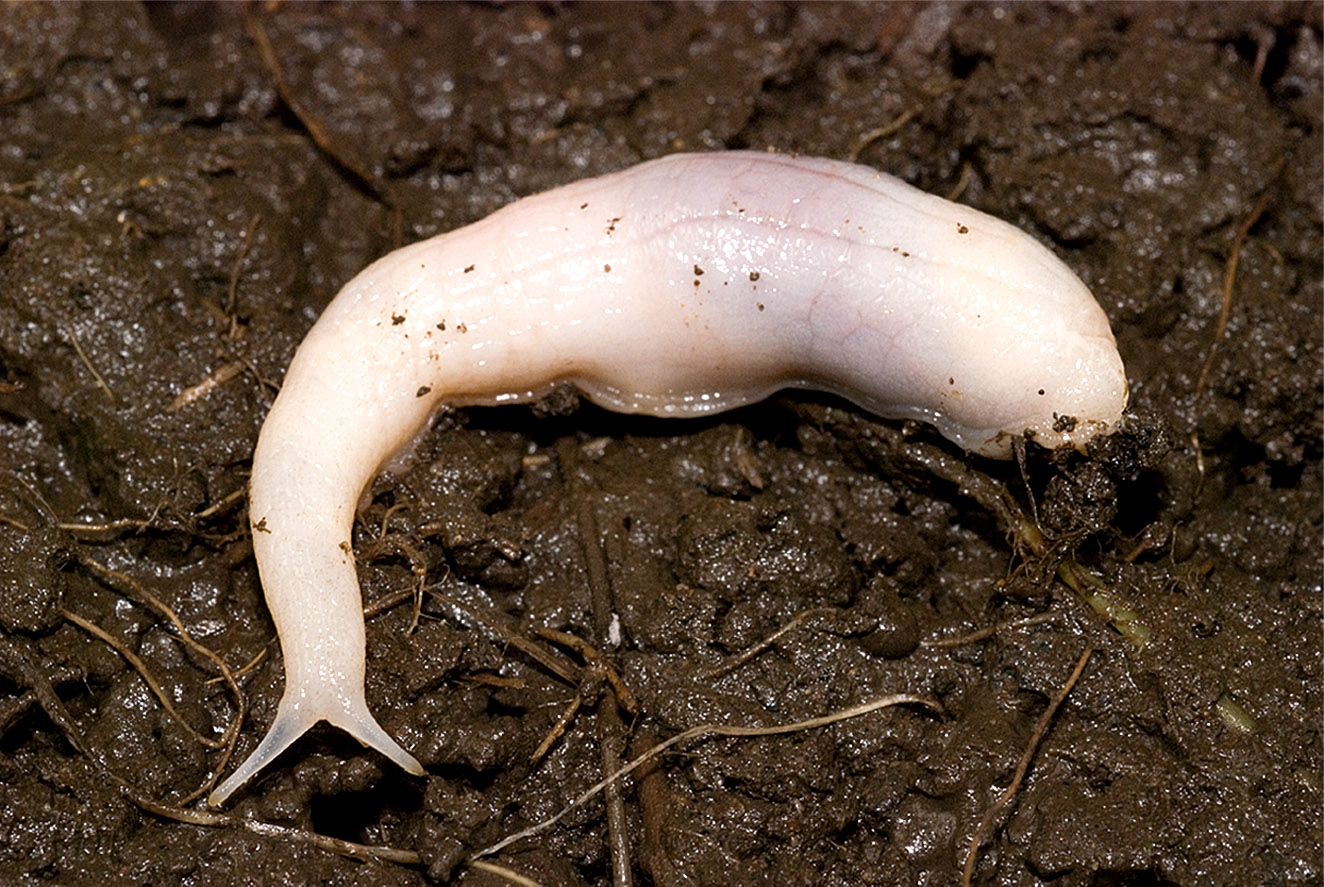- Ghost slug
Taxobox
name = Ghost slug
"Selenochlamys ysbryda"
status =
status_ref = [IUCN 2008. 2008 IUCN Red List of Threatened Species.. Downloaded on 07 October 2008. ]

image_width = 300px
regnum =Animal ia
phylum =Mollusca
classis =Gastropoda
superordo =Heterobranchia
ordo =Pulmonata
subordo =Eupulmonata
infraordo =Stylommatophora
superfamilia =Parmacelloidea
familia =Trigonochlamydidae
genus = "Selenochlamys "
species = "S. ysbryda"
range_
range_map_caption=
binomial = "Selenochlamys ysbryda"
binomial_authority = Rowson & Symondson, 2008 [Rowson B. & Symondson O. C.: "Selenochlamys ysbryda sp. nov. from Wales, UK: a Testacella-like slug new to western Europe (Stylommatophora: Trigonochlamydidae)". Journal of Conchology, June 2008, Vol. 39, part 5, 537-552. ( [http://www.conchsoc.org/resources/show-abstract-39.php?id=%20%20%20%20%20%20%20%20%20%20%20%20151 abstract] )]The ghost slug,
scientific name "Selenochlamys ysbryda", is aspecies ofpredatory slug , a shell-lesspulmonate gastropod mollusk .The species was discovered in 2006
Wales ,UK , and was formally described and named in 2008 by Ben Rowson, a research assistant and PhD candidate at theNational Museum Wales "(Amgueddfa Cymru)", and Bill Symondson, an ecologist atCardiff University .Description and ecology
This slug can reach 6 or 7 cm or about 2 inches in size, with its body extended. It has no eyes, and is white in colour. It is
nocturnal , and unlike the majority ofslugs , it is acarnivore , feeding onearthworms at night using its blade-like teeth. [ [http://news.bbc.co.uk/2/hi/uk_news/wales/south_east/7498195.stm Worm-eating slug found in garden (video)] ,BBC News . Published 10th July, 2008. Retrieved 10th July, 2008.] The species was unknown to science prior to 2006. [http://www.museumwales.ac.uk/en/news/?article_id=440 'Ghost slug' is a mystery - New species of slug surfaces in the UK] ,National Museum of Wales . Published 10th July, 2008. Retrieved 11th July, 2008.]Because of the slug's white color and nocturnal habits, and because it has been so rarely seen, it was given the species name "ysbryda", the word "ysbryd" meaning ghost in the
Welsh language . This in turn gave rise to thecommon name , "ghost slug". This appears to be the first case of a species name having been taken from the Welsh language.Distribution
Slug species in this family are more commonly found in
Turkey and Georgia, however, as far as is currently known, no representatives have been found and described inWestern Europe prior to this discovery. Although the species is almost certainly introduced, the country of origin of this species, and how it made its way into Britain is still unknown. Bill Symondson speculated that the slug originally evolved in cave systems alien to theUK , and may possibly have arrived in Wales in soil in a potted plant.The first specimen was found in a lane in
Caerphilly on October 29th 2006 [ [http://petsnails.proboards3.com/index.cgi?board=identification&action=display&thread=1071 Albino snail? (photos)] , The [http://www.petsnails.co.uk petsnails.co.uk] forums. Published October 29th, 2006. Retrieved 15th July, 2008.] . This single specimen was photographed and then released. A year later, another slug was found by a gardener nearCardiff , Wales, where it was brought to the attention of theNational Museum Wales . Additional ghost slugs have been found inGorseinon , near Swansea, Wales. [ [http://www.museumwales.ac.uk/en/rhagor/article/?article_id=193 Help us find out more about the mysterious alien "Ghost Slug"] Published 9 July 2008, Cited 7 October 2008.]The slug is not harmful to humans, but as a presumed introduced species, more information is being collected, partly on the basis of an appeal to the public. As more information is gathered, the distribution of the species will be monitored to check that it does not become an invasive pest species as it presumably spreads across South Wales.
References
External links
* [http://www.museumwales.ac.uk/media/5/1/0/5/GhostSlug_en.pdf Identification guide at the National Museum of Wales]
* [http://www.museumwales.ac.uk/en/rhagor/article/?article_id=193 National Museum page calling for help in identifying and monitoring Ysbryda.]
* [http://www.cf.ac.uk/biosi/contactsandpeople/stafflist/q-t/symondson-bill-dr-overview_new.html Dr Bill Symondson's home page at Cardiff University]
Wikimedia Foundation. 2010.
